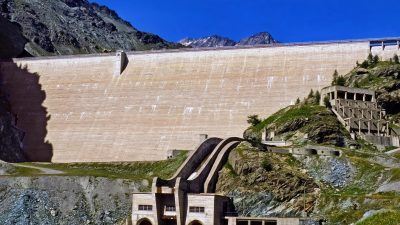The Catastrophe That Shook the Byzantine Empire
The 526 Antioch earthquake was one of the deadliest seismic disasters in recorded history, striking the Eastern Roman (Byzantine) city of Antioch on May 20, 526. The devastation was unprecedented, with estimates of the death toll reaching 250,000, though some historians believe the actual number could be even higher, given the city’s population and the influx of traders and visitors at the time. This earthquake was not an isolated event; it came at a time when the Byzantine Empire was already struggling with political instability, religious conflicts, and external threats. The disaster reduced one of the empire’s most significant cities to rubble, not only killing tens of thousands but also destroying its economy, infrastructure, and religious institutions.
The earthquake itself was catastrophic, but it was the firestorm that followed that ensured Antioch’s near-total destruction. As buildings collapsed, fires broke out across the city, engulfing homes, churches, and public spaces. The inferno raged for days, consuming everything in its path and trapping thousands of survivors under debris. Some sources suggest that oil lamps and cooking fires, knocked over by the initial tremors, triggered the flames. Others speculate that in the chaos, arsonists and looters took advantage of the situation, further spreading destruction. Whatever the cause, the combination of fire and earthquake meant that Antioch was left unrecognizable, with little hope for immediate recovery.
At the time, Antioch was one of the most important cities of the Byzantine Empire, second only to Constantinople and Alexandria in wealth and influence. It was a major commercial hub, linking the Mediterranean world to the trade routes of Persia, India, and China. Beyond its economic significance, Antioch was also a center of Christian theology, playing a crucial role in early Church politics. The earthquake, however, crippled its standing in the empire. With much of the city in ruins and its people either dead or displaced, Antioch’s role as a cultural and religious capital weakened. While the Byzantines attempted to rebuild, the city never fully regained its former prestige. In the following decades, it would face further calamities—another devastating earthquake in 528, a Persian invasion in 540, and later the Islamic conquests that would permanently shift control of the region.
The impact of the 526-earthquake extended beyond physical destruction; it also triggered widespread religious and political turmoil. Many in the Byzantine world interpreted the disaster as divine punishment, believing that Antioch’s people had fallen into sin and corruption. Apocalyptic fears spread, with religious leaders warning of the end times and demanding repentance. The empire’s response was slow and inadequate, leading to resentment among survivors. Emperor Justin I, already an aging and ineffective ruler, was unable to provide sufficient aid, leaving much of the relief efforts to his nephew and successor, Justinian I, who later took on the task of rebuilding. However, even Justinian’s efforts failed to restore Antioch to its former status, as the city continued to decline in importance.
This disaster serves as a stark historical reminder of how natural calamities can accelerate the downfall of even the greatest civilizations. The Byzantine Empire was vast and powerful, yet it struggled to recover from this single catastrophic event. The Antioch earthquake exposed the weaknesses of the empire—its inability to respond swiftly, the corruption in its relief efforts, and the growing divide between the ruling elite and the suffering population. In many ways, it was not just an earthquake that destroyed Antioch, but a failure of governance, faith, and preparedness. The lessons from this catastrophe remain relevant today, as cities around the world remain vulnerable to similar disasters.
2. The Scale of Destruction: Unraveling the Devastation
One of the deadliest earthquakes in history, the 526 Antioch earthquake was also one of the most destructive in terms of urban devastation. The May 20, 526, earthquake was so powerful that almost all of Antioch’s infrastructure fell apart at once. According to ancient accounts, dwellings, public buildings, and places of worship were overturned by severe ground shaking that persisted for a long time. Large portions of the city’s renowned stone architecture were crushed to rubble because to the tremors’ tremendous impact, trapping thousands of people beneath crumbled structures. The original impact undoubtedly killed tens of thousands outright, but it was the subsequent calamities that followed which ensured Antioch’s near-total extinction.
The firestorm that erupted after the earthquake caused even greater destruction than the tremors themselves. With most of the city’s buildings constructed of wood and stone, the fires spread rapidly, engulfing entire districts. Historical accounts suggest that the flames raged for days, consuming homes, marketplaces, and religious sites. The fire was likely triggered by oil lamps and kitchen fires that were knocked over during the earthquake, igniting highly flammable materials. However, some sources indicate that the chaos allowed looters and arsonists to set additional fires, worsening the situation. The combination of extreme heat and collapsed buildings trapped thousands, leading to horrific deaths as survivors were burned alive under the rubble.
Several key locations within the city suffered total destruction, including its churches, public baths, aqueducts, and government buildings. Among them, the Great Church of Antioch, a major Christian landmark, was completely leveled. The loss of these structures was not just a blow to the city’s infrastructure but also to its cultural and religious identity. Antioch had been a significant center of early Christian theology, and the destruction of its religious buildings deepened the belief that this disaster was divine punishment.
The Scale of Death and Displacement
The estimated 250,000 deaths make this one of the deadliest earthquakes in recorded history. While some historians believe this number may have been exaggerated by later accounts, it is clear that the scale of loss was immense. Given that Antioch’s population at the time ranged between 200,000 and 300,000, it is likely that more than half of the city’s inhabitants perished. Many survivors faced starvation, disease, and exposure, as nearly all food supplies and water sources were either destroyed or contaminated.
In addition to the enormous loss of life, the earthquake also led to mass displacement. Tens of thousands of survivors fled the ruins of Antioch, seeking refuge in the countryside or in nearby cities. However, with no structured relief effort in place, many of these refugees died from hunger, illness, or attacks from bandits. The disaster disrupted trade routes and crippled Antioch’s economy, leaving it unable to sustain the population that remained.
Key Factors That Increased the Devastation:
- High Population Density – Antioch was one of the largest cities in the Byzantine Empire, with crowded streets and tightly packed buildings, increasing casualties when structures collapsed.
- Poor Building Materials – While some structures were built with stone, many homes relied on weak mortar and wooden supports, making them extremely vulnerable to seismic activity.
- Fires and Lack of Firefighting – The absence of an organized firefighting system meant that once the fire spread, there was no way to contain it.
- Limited Medical Aid – There were no effective emergency response systems, meaning that injured survivors were left untreated, leading to higher post-earthquake deaths.
- Slow Government Response – The imperial government in Constantinople was slow to send aid, allowing the situation in Antioch to worsen in the days and weeks following the quake.
3. Political and Religious Fallout: The Empire’s Struggle to Recover
The 526 Antioch earthquake triggered a political and religious crisis that weakened the Byzantine Empire. Under the rule of the aging Emperor Justin I, the empire was already struggling with internal divisions, religious conflicts, and external threats. The earthquake exposed the inefficiencies of the imperial administration and led to a slow and inadequate response, leaving survivors without food, clean water, or medical aid. This caused widespread starvation, disease, and mass displacement, with many refugees dying from hunger or exposure.
Economically, the earthquake devastated Antioch, a crucial commercial hub, crippling trade routes and destroying the city’s infrastructure. The loss of tax revenue further weakened the already fragile financial system, limiting the empire’s ability to fund military and administrative efforts.
Religiously, the disaster was seen as divine punishment, fueling apocalyptic fears and deepening sectarian divisions between Orthodox and Miaphysite Christians. The emperor’s failure to act quickly damaged his reputation, and the rebuilding efforts, led by Justinian I, could not restore Antioch’s former glory. After another earthquake in 528 and the Persian invasion in 540, Antioch’s decline was solidified.
Ultimately, the 526 earthquake marked the beginning of Antioch’s downfall, highlighting the Byzantine Empire’s vulnerabilities. The inability to respond effectively to the disaster foreshadowed the empire’s struggles in the centuries to come.
4. Divine Wrath or Natural Disaster
The 526 Antioch earthquake was not only a physical catastrophe but also a spiritual crisis that intensified religious fears across the Byzantine Empire. At a time when natural disasters were often seen as divine punishment, many believed that the destruction of Antioch was God’s wrath upon a sinful city. The widespread devastation, fire, and massive loss of life led religious leaders to proclaim that Antioch had brought this disaster upon itself through moral corruption, heresy, and impiety.
Christian theologians, already engaged in intense doctrinal conflicts, used the earthquake to support their religious agendas. Antioch had long been a battleground for sectarian disputes between Orthodox Chalcedonians and Miaphysites, and the disaster further deepened these divisions. Some Orthodox figures pointed to heretical influences within the city, claiming that God had cleansed it through fire and ruin. Meanwhile, apocalyptic preachers fueled doomsday fears, warning that the earthquake was a sign of the approaching end times. Panic spread among the survivors, with some turning to extreme acts of penance, fasting, and public displays of devotion in hopes of appeasing divine anger.
Despite these religious interpretations, some within the empire recognized the earthquake as a natural phenomenon rather than divine retribution. Byzantine scholars had knowledge of seismic activity and understood that earthquakes were common in the region. However, in an era dominated by theological explanations, scientific reasoning was overshadowed by religious hysteria. Ultimately, the disaster reinforced the idea that political and religious turmoil were directly linked to divine will, shaping public perception and imperial policies in the years that followed.
5.The Economic Collapse
The 526 Antioch earthquake dealt a severe blow to the economic foundation of both the city and the Byzantine Empire. As one of the empire’s most important trade hubs, Antioch facilitated commerce between the Mediterranean, Persia, and the East. The destruction of its markets, ports, and trade routes disrupted this flow, causing severe economic losses. The fire that followed the earthquake further annihilated warehouses, currency reserves, and merchant goods, leaving traders bankrupt and forcing businesses to shut down.
The financial burden of reconstruction strained the Byzantine treasury, which was already struggling due to military campaigns and internal conflicts. Rebuilding efforts, initiated under Emperor Justinian I, required massive resources, but despite investments, Antioch never regained its former economic strength. Many merchants relocated to other cities, and the Persian invasion of 540 CE delivered a final blow, making restoration nearly impossible. The earthquake did not just destroy buildings—it shattered the city’s status as a major economic power, accelerating its decline within the empire.
6. Seismic Science vs. Ancient Superstitions
The 526 Antioch earthquake occurred in an era without the scientific understanding we have today. Ancient civilizations, including the Byzantines, lacked the ability to predict seismic events or understand the causes behind them. The earthquake itself was not preceded by any clear, recognizable warning signs that could have been detected or acted upon. The Byzantine Empire, like many ancient societies, had no formal systems for monitoring seismic activity, leaving the population unprepared.
While ancient superstitions often linked disasters like earthquakes to divine punishment, modern seismic science has shown that earthquakes are natural events caused by tectonic shifts, not supernatural forces. The Byzantines, instead of looking for scientific explanations, attributed the event to the wrath of God, further fueling religious panic. If seismic monitoring and early warning systems had existed, it is possible that the disaster could have been anticipated and mitigated. However, the empire’s reliance on superstition over science meant that they were unable to act on any potential early warnings that might have existed.
7. The Role of Corruption: Sabotaged Reconstruction Efforts
The reconstruction of Antioch after the 526 earthquakes was hindered by corruption and inefficiency within the Byzantine government. While the emperor’s nephew, Justinian I, oversaw the rebuilding efforts, the response was marred by misallocation of resources and financial mismanagement. Relief funds were often diverted, with local officials accused of exploiting the disaster for personal gain. This corruption slowed down the process and left many survivors without adequate assistance. The lack of transparency and accountability in the distribution of aid further fueled resentment among the people. Some speculate that wealthy elites and high-ranking officials took advantage of the chaos, siphoning off funds meant for reconstruction, leaving Antioch unable to recover fully. These failures highlighted the systemic issues within the Byzantine bureaucracy, preventing a swift recovery for a city that once played a vital role in the empire.
8. Weakened Empire, Stronger Enemies
The 526 Antioch earthquake severely weakened the Byzantine Empire both militarily and politically. The destruction of Antioch, one of the empire’s most vital cities, left it vulnerable to external threats. In particular, the Persian Empire, which had long sought control of key regions, saw an opportunity to capitalize on the empire’s diminished strength. The economic and military resources needed to rebuild Antioch were diverted, leaving Byzantine defenses weaker at a crucial time.
Additionally, the disaster accelerated the decline of Antioch’s influence within the empire. The city had been a cultural, religious, and commercial hub, but after the earthquake, it never fully regained its former status. Political power shifted to other regions, particularly Constantinople, and Antioch’s role in imperial governance weakened. The earthquake exposed the fragility of the Byzantine Empire’s territorial control, hastening its decline and making it more susceptible to Persian invasions and later Islamic conquests. This shift in power dynamics can be seen as a direct consequence of the empire’s failure to recover quickly, which left it vulnerable to stronger external forces.
9. Could It Happen Again? The Modern-Day Threat of Earthquakes in the Region
The region of modern-day Turkey and Syria lies in a seismically active zone, prone to earthquakes similar to the 526 Antioch earthquake. Both countries are situated on major fault lines, including the East Anatolian and North Anatolian fault zones, which increase the likelihood of future seismic events. Despite advancements in earthquake science and early warning systems, much of the region remains unprepared for a major disaster. Modern infrastructure, especially in urban areas, is often vulnerable to seismic activity, with buildings constructed without sufficient resistance to earthquakes.
Turkey and Syria’s governments have made efforts to improve disaster preparedness, but corruption, bureaucratic inefficiencies, and lack of enforcement of building codes continue to undermine these initiatives. The failure to learn from past tragedies, such as the 1999 İzmit earthquake in Turkey, where poor planning led to thousands of deaths, means the region remains highly vulnerable. Given the historical patterns of devastating earthquakes in this area, it is not only possible but likely that a similar event could occur again. The question remains: Will the region act swiftly and effectively to mitigate the damage, or repeat the mistakes of the past?
10. Conclusion
The 526 Antioch earthquake stands as a stark reminder of how a single natural disaster can reshape the course of history. While the earthquake itself was a catastrophic event, the subsequent fires, political failures, and economic collapse exposed the deeper vulnerabilities within the Byzantine Empire. Antioch, once a thriving center of commerce, religion, and culture, was left in ruins, never to fully recover. The disaster not only weakened the empire’s ability to defend itself from external threats but also highlighted the empire’s internal corruption and inefficiencies in handling crises. The aftermath of the earthquake serves as a cautionary tale, demonstrating how natural disasters, when coupled with political and administrative failures, can accelerate the decline of even the greatest of civilizations.
Frequently Asked Questions (FAQ):
Q1: What caused the 526 Antioch earthquake?
The earthquake was caused by tectonic movements along fault lines in the region, likely triggered by the interaction of the Eurasian and Arabian Plates. Seismologists suggest it was part of a larger series of earthquakes in the area.
Q2: How many people died in the 526 Antioch earthquake?
Estimates suggest that the death toll reached around 250,000, though some historians argue it could have been higher due to the large number of traders and visitors in the city at the time.
Q3: What role did fires play in the devastation of Antioch?
After the initial tremors, fires broke out across the city, likely caused by overturned lamps and cooking fires. These fires, coupled with collapsing buildings, significantly contributed to the widespread destruction and high death toll.
Q4: How did the Byzantine Empire respond to the earthquake?
The initial response was slow and ineffective. Emperor Justin I was criticized for his inadequate relief efforts, and much of the rebuilding work was left to his nephew, Justinian I, who also struggled to restore the city to its former prominence.
Q5: Did Antioch ever recover from the 526 earthquake?
No, Antioch never fully regained its former economic, cultural, and political status. Further disasters, including another earthquake in 528 and the Persian invasion in 540, continued to cripple the city.
Q6: What were the long-term effects of the Antioch earthquake on the Byzantine Empire?
The earthquake contributed to the empire’s weakening by exposing vulnerabilities in governance, economy, and military preparedness. Antioch’s decline diminished the empire’s strategic and economic capabilities, especially in the face of Persian and later Islamic invasions.
References:
1: Wikipedia; 526 Antioch earthquakes
2: The Earthquake of 526 CE: A Byzantine Tragedy
3: Antioch, ancient Syria (modern-day Turkey)
4: The Great Earthquake of 526: Impact on the Byzantine World
5: Earthquake at Antioch
https://aspectsofhistory.com/earthquake-at-antioch/
YT LINK
1: The Antioch Earthquake of 526: An Ancient Cataclysm
https://www.youtube.com/shorts/6wCvIlBtKIg
2: The 526 Antioch Earthquake, 15 centuries before the 2023 Turkey-Syria Earthquake




